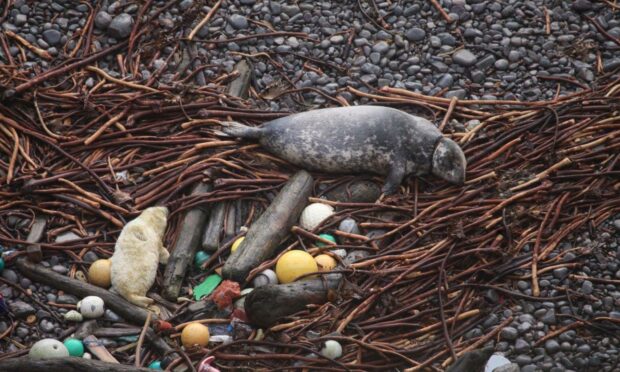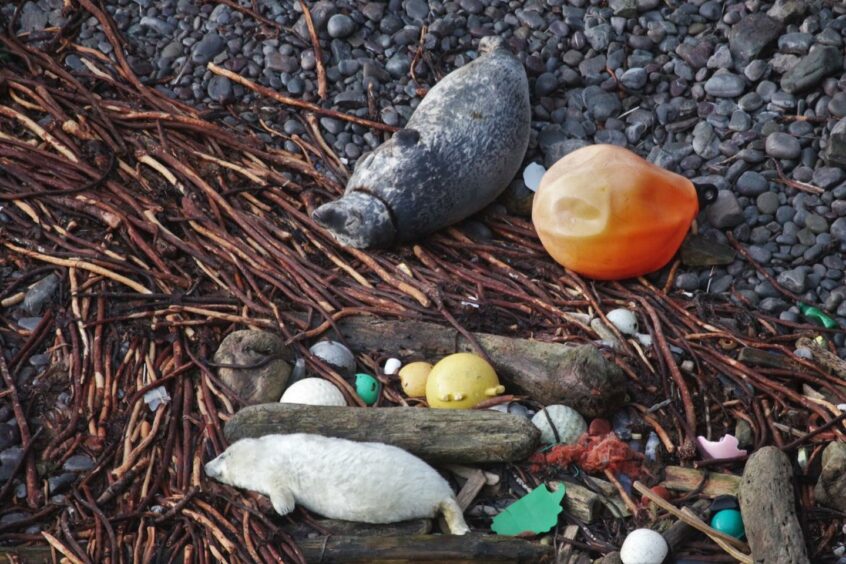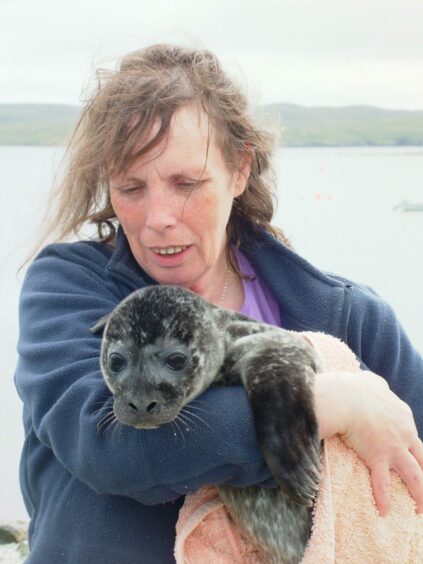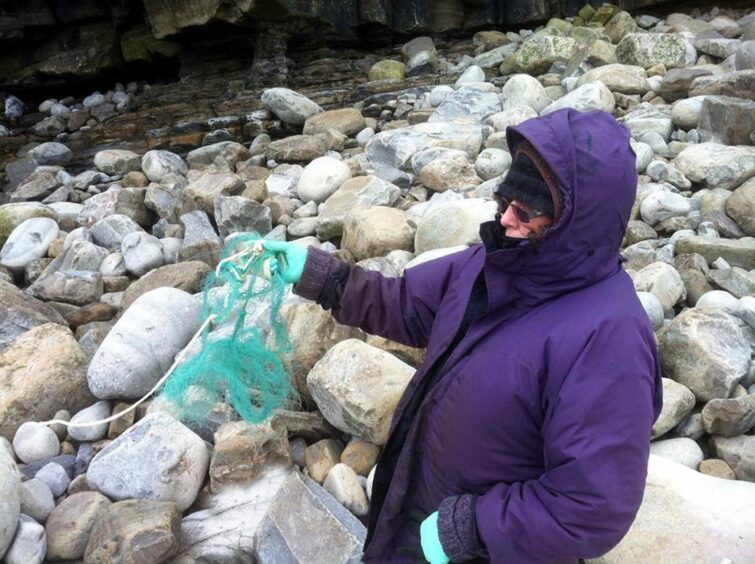Yet another seal has been spotted with a deep neck wound caused by plastic rope becoming entangled around its throat.
The grey mother seal has been spotted on a remote beach on the Shetland mainland along with her pup.
This is a sight which is becoming more and more common, according to Jan and Pete Bevington who run the Hillswick Wildlife Sanctuary on the island.
“It’s incredibly sad – you just want to go over and snip it off but it’s not that easy,” said Jan.
Will the seal survive?
This seal is far from the first to become entangled in plastic rope or fishing gear around Shetland.
But despite it being a relatively common occurrence, removing the offending piece of pollution from the animal is incredibly difficult.
“It’s especially difficult to help grey seals like this one,” Jan said. “They are much bigger than common seals and more ferocious – it could take your arm off if it felt like it.”
Jan explains that the seals are nervous around humans and will not let any rescuers get near, either on foot or by boat.
“Usually you have to wait until the seal is weak and half dead before you can approach it,” she said.
“Otherwise it will just slip straight into the water again.”
If a seal allows one of the Hillswick experts to get near, it is taken to the sanctuary and rehabilitated before being released.
Until then however, it is a waiting game to see if it will survive.
In this case, Jan says the mother seal is doing as well as can be hoped and is continuing to care for her pup.
Why are so many seals getting caught up in plastic pollution?
Jan and Pete both say that over the last few years there has been a significant increase in the number of seals getting tangled up in fishing and plastic pollution.
“We are seeing a lot more cases of seals with netting, plastic, rope or twine around their necks than before,” said Pete.
“We are aware of several around the island at the moment but can’t get to them to help.”
He says the problem has arisen in the last few years and seems to coincide with foreign fishing boats dumping nets in the waters nearby.
The foreign boats use a different type of fishing gear called monofilament, which is fishing line made from a single long fiber of plastic, as opposed to traditional braided fishing line.
“As far as I understand it, local fisherman aren’t allowed to use this type of gear,” Pete explained.
“And they tell me that these boats are trailing miles and miles of netting behind them which then gets dumped over the side and the seals accidentally swim into.”
Shampoo bottles from Japan washing up in Shetland
But it’s not just fishing gear that is increasingly polluting Shetland’s waters.
Despite more awareness about the harm plastic pollution causes to oceans, island residents are noticing more and more plastic rubbish washing up.
“Although it’s a small island, Shetland has 1,600 miles of coastline,” said Pete.
“There are lots of small inlets which seem to act like a comb and rubbish gets caught up and stuck.
“We see stuff from all over the world, like shampoo bottles from Japan and all sorts.
“It’s not getting any better.”
And Shetlanders are certainly no strangers to picking this litter up.
The annual Da Voar Redd Up is the UK’s most successful community litter pick, with over 20% of Shetland’s population volunteering their time each year.
“But it doesn’t stop the problem,” Jan said.
“We need laws and legislation in place to really start protecting our oceans.”



